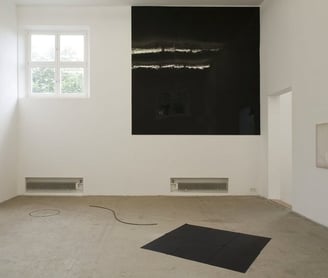Material Thought
Tiffany Smith
4/4/2011


One of the seven international artists featured in the Hammer Museum invitational All of This and Nothing is British sculptor Ian Kiaer. Playing with scale and using sculpture as material thought, his objects are catalysts for projection. Inside the mimetic structures of Kiaer’s objects, one proceeds into a deeper space of the mind.
Depending on how you look at individual pieces in his installations, your point of view could be downsized or, the area of the material objects blown up (figuratively speaking) from their actual sizes. Kiaer’s sculptures are analogous to architectural models in that they are used out of necessity to represent something real, albeit abstractly. He arranges recognizable materials and found objects as an architect would assemble miniature parts of a model home with proportions relative to the human body. In Kiaer’s work there are two scales: one, the actual sizes of the scattered objects, and two, a scale that is arguably bigger or smaller than actual size, where the viewer enters the mimetic like a room.
By zooming in on the installation’s individual parts and then stepping back to look at it as a whole, locating exactly where the mimetic meets the non-mimetic is unclear. One of Kiaer’s sculptures in All of This and Nothing is a large freestanding steel frame to be walked through. As one enters the exhibition through double doors, Kiaer poses yet another threshold to be crossed. As a second entryway, this metaphorical looking-glass points to the sliding scale of mimesis. Kiaer seems to suggest that the more we try to isolate art from everything else, including the wall, empty space, and other objects, the more art is driven away from life.
At the very least, Kiaer suggests that we leave behind our preconceptions about art and things we may not normally think of as being art. By taking recognizable objects like a ping pong ball or a yoga mat out of their everyday contexts and positioning them amidst abstract materials such as an acrylic black square for which we have no name, we are compelled to look at disparate objects for their formal qualities (i.e. size, shape, color, texture), and then consider them together as units of a purely material language that punctuate space.
